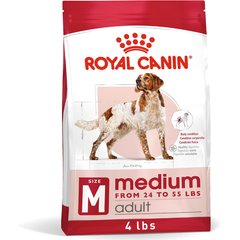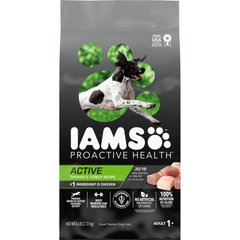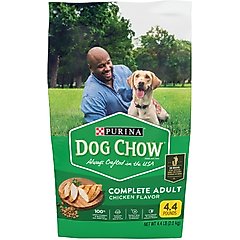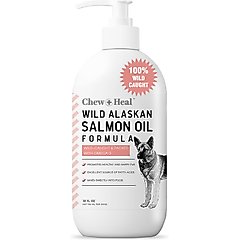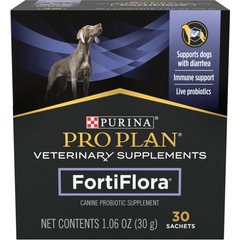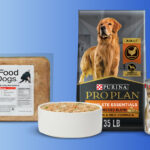Dog Nutrition: What Is Complete and Balanced Dog Food?
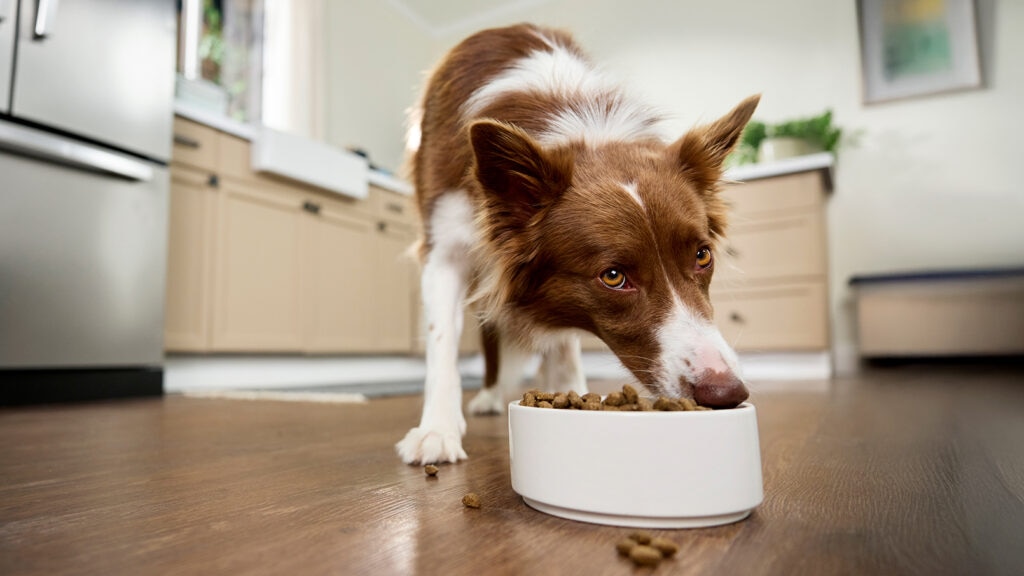
Photo by Chewy
Dog nutrition is more than choosing between wet or dry food (though that’s a conversation worth having). It’s about ensuring your pup gets the right mix of nutrients for a healthy, happy life.
But how can you be sure your dog’s food provides everything they need? That’s where complete and balanced nutrition comes in.
We spoke with two veterinarians to learn what “complete and balanced” really means and how to feel confident about what’s in your dog’s bowl.
What Should Be in a Dog’s Diet?
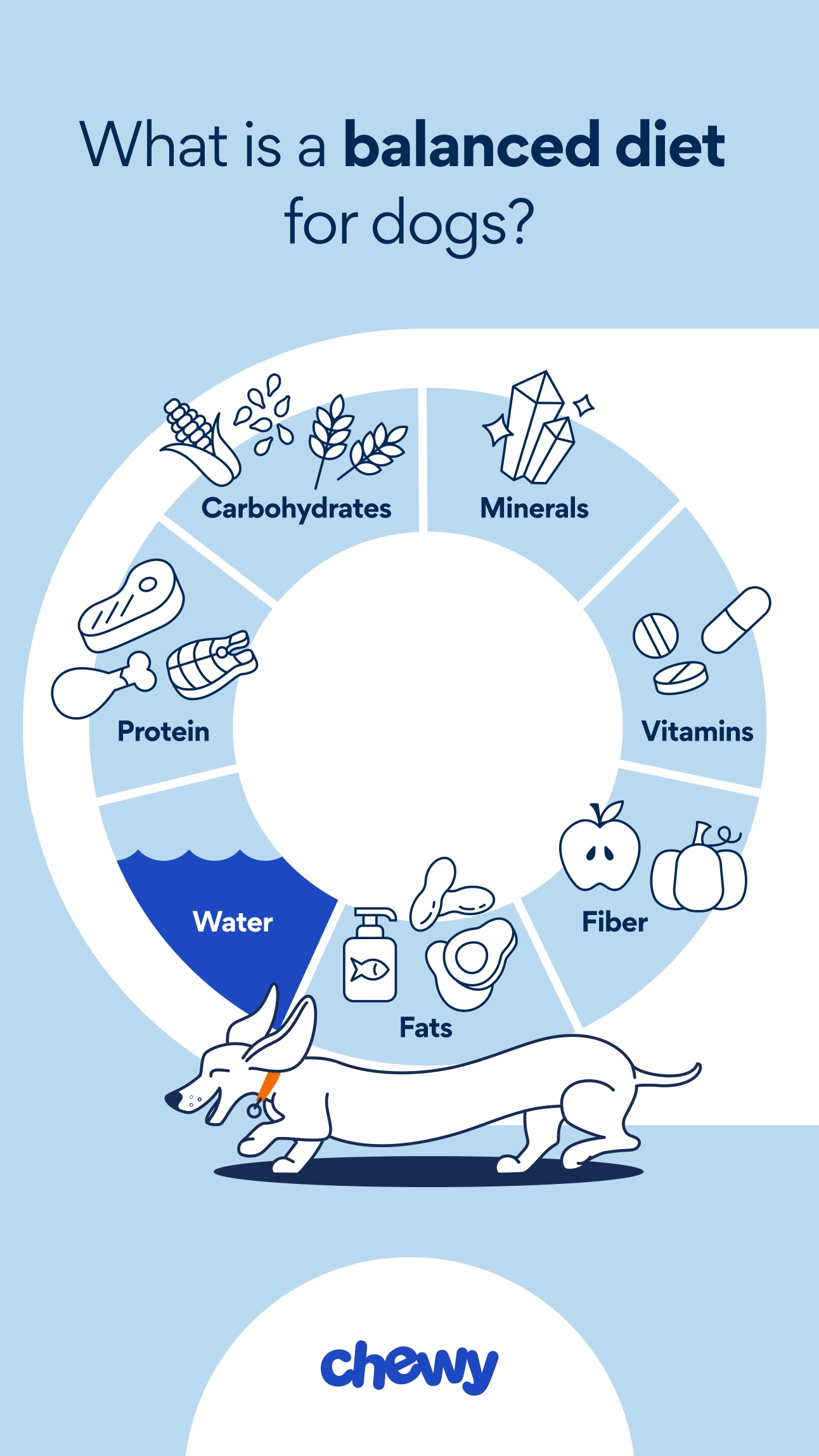
Photo by Chewy
Whether you’re feeding kibble, wet food, or a raw diet, the key is choosing a food that has the right balance of nutrients. According to the Association of American Feed Control Officials (AAFCO)—a non-profit organization that sets nutritional standards for pet food in the US—dogs require six essential nutrient groups, including:
- Protein: The foundation of a dog’s diet, animal-based proteins like chicken, beef, fish, and eggs provide essential amino acids that support the formation and maintenance of cartilage, tendons, ligaments, muscles, skin, hair, nails, and blood.
- Fats: Dietary fat provides energy, aids in fat-soluble vitamin absorption, and supplies essential fatty acids like omega-3 and omega-6, which support skin, coat health, and inflammation control. Common sources include fish oil, chicken fat, and flaxseed.
- Carbohydrates: Carbs from sources such as whole grains, sweet potatoes, and legumes provide fiber for digestion and a steady energy source.
- Vitamins: Vitamins play a crucial role in a dog’s body, supporting everything from DNA production and bone growth to blood clotting and nervous system function. Dogs require several vitamins, including choline and vitamins A, B1, B2, B3, B5, B6, B7, B9, B12, D, E, and K.
- Minerals: Minerals support several vital functions and structural development. An imbalance can disrupt key biological processes, potentially leading to serious health issues. Essential minerals for dogs include calcium, phosphorus, magnesium, potassium, sodium, chloride, iron, copper, zinc, manganese, selenium, and iodine.
- Water: Though often overlooked, water is a critical nutrient. Proper hydration keeps your dog’s body functioning, aids digestion, and regulates body temperature.
A dog’s dietary needs shift as they grow, making it important to adjust their food accordingly:
- Puppies: Puppy food should contain higher levels of protein, fat, phosphorus, and calcium than adult dog food, says Gary Richter, DVM, owner of Holistic Veterinary Care in Oakland, California. These nutrients support muscle and bone development and provide the energy needed for growth and essential functions.
- Adult dogs: While adult dogs have the greatest amount of flexibility in their nutrient intake, they should still be eating a complete and balanced diet to support their health, Dr. Richter says.
- Senior dogs: Older dogs often require fewer calories and might need a more easily digestible diet, Dr. Richter says.
What Is Complete and Balanced Dog Food?
The AAFCO sets nutritional standards to help pet food manufacturers formulate diets that meet the dietary needs of dogs at various life stages. According to the AAFCO:
- “Complete” means the food meets all nutrient requirements for a dog’s life stage.
- “Balanced” means those ingredients are in the appropriate proportions.
Why is feeding a complete and balanced diet necessary? Because dogs typically eat the same food every day, any nutritional imbalance can add up over time, Dr. Richter explains.
An imbalance—whether too little or too much of a nutrient—can contribute to issues such as:
- Weak bones
- Dull coat
- Digestive issues
- More severe health concerns
What Dog Foods Are Considered Complete and Balanced?
“There are many companies out there that do their best to make quality dog foods, but when asked, I usually recommend foods from Purina, Hill’s, Iams, and Royal Canin,” says Chris Konvalinka, DVM, a veterinarian and partner at Bahama Road Veterinary Hospital in Bahama, North Carolina.
He explains that these companies have veterinarians and veterinary nutritionists on staff and strive to make high-quality products that are complete and balanced.
To check whether a product is complete and balanced, look for the nutritional adequacy statement on the dog food label.
According to the US Food and Drug Administration (FDA), foods labeled “complete and balanced” for a certain life stage are formulated to provide all essential nutrients and can serve as a dog’s sole diet. If a product doesn’t meet this standard, it must be labeled “for intermittent or supplemental feeding only.”
Here’s a list of some of the best complete and balanced dog foods recommended by vets:
- Best overall: Hill’s Science Diet Adult Chicken & Barley
- Best for picky eaters: Royal Canin Health Nutrition Medium Adult
- Best for active dogs: Iams Proactive Health Active Chicken & Turkey
- Best for budget: Purina Dog Chow Complete Adult Chicken
Recommended Products
Before changing your dog’s diet, talk with your veterinarian. They can approve your chosen food or provide a personalized recommendation based on your dog’s age, breed, health status, lifestyle, and specific nutritional needs.
Pro Tip: When switching to a new food, do so gradually to encourage acceptance and minimize digestive upset.
Do Dogs Need Supplements?
A complete and balanced dog food should provide all the essential nutrients your pup needs. However, there are situations where a veterinarian might recommend supplements to support specific health concerns.
While supplements can be beneficial, always talk to your vet before adding them to your canine companion’s diet to make sure they’re safe for your dog.
Some commonly recommended dog supplements include:
- Joint supplements: Often recommended for senior dogs or large breeds prone to arthritis, joint supplements like glucosamine, chondroitin, and MSM can help maintain joint health and mobility.
- Fish oil: Rich in omega-3 fatty acids, fish oil supplements, such as Vetoquinol Triglyceride OMEGA help support your fur baby’s skin, coat, hips, joints, heart, and immune system.
- Probiotics: Probiotics, such as Purina Pro Plan FortiFlora, are beneficial bacteria that can help support gut and immune health.
FAQs About Dog Nutrition
Q: What should I look for in dog food labels?
A: When reviewing a dog food nutrition label:
- Start by looking for a nutritional adequacy statement confirming that the food meets AAFCO standards for a complete and balanced diet.
- Next, check the first few ingredients, as they make up the majority of the food. Ideally, these should include a high-quality source of protein, like meat, poultry, or fish, along with wholesome carbohydrates, healthy fats, vitamins, and minerals.
Q: When should I consider feeding my dog grain-free dog food?
A: Grain-free diets are not inherently healthier and have been linked to potential heart health concerns in some dogs, particularly related to dilated cardiomyopathy (DCM), says Dr. Konvalinka.
However, a grain-free diet might be beneficial for dogs with grain allergies.
Always talk with your vet before switching to a grain-free diet to determine whether it’s the right choice for your dog.
Q: What’s the difference between wet and dry dog food?
A: Wet food has a higher moisture content, making it a great option for increasing hydration. It also tends to be easier to eat for puppies, senior dogs, or those with dental issues.
Dry food, on the other hand, is more convenient, has a longer shelf life, and could help reduce dental plaque buildup.
Both can provide complete and balanced nutrition, so the best choice depends on your dog’s needs, preferences, and lifestyle, explains Dr. Konvalinka. Many pet parents choose a mix of both to get the benefits each offers.
Q: Is chicken meal bad in dog food?
A: No, chicken meal isn’t bad—it’s a healthy, protein-rich ingredient that supplies essential fatty acids and is made from cooked and dried chicken meat, skin, and bone.
Chicken by-product meal comes from leftover carcass parts, like lungs, kidneys, liver and spleen, that provide protein and essential nutrients.
Q: Can I make my own complete and balanced dog food?
A: While it’s possible to prepare homemade dog food, making sure it’s nutritionally complete and balanced is challenging.
Dogs require precise amounts of protein, fats, carbohydrates, vitamins, and minerals, which can be difficult to achieve without expert guidance and testing.
If you want to feed a homemade diet, work with a veterinary nutritionist to formulate a well-balanced recipe that meets your dog’s specific needs.
Q: How much protein is in dog food?
A: The protein content in dog food varies, but most commercial formulas contain between 18–30% protein on a dry matter (DM) basis.
Puppy, active, and high-performance diets typically have higher protein levels, while senior and weight management foods may have less.
Always check the guaranteed analysis on the label for the exact amount.
Attributions
This content was medically reviewed by Jo Cornett, DVM, Chewy veterinarian.

